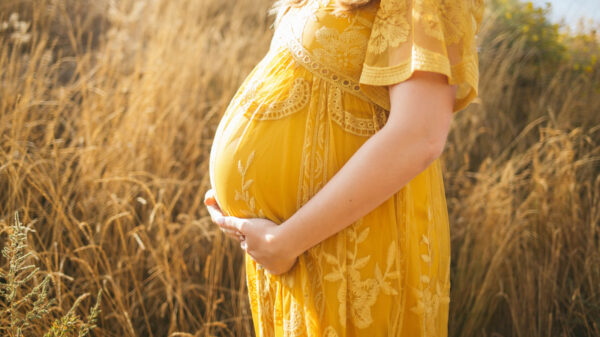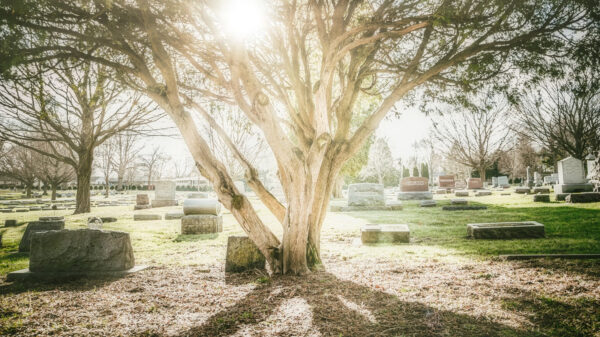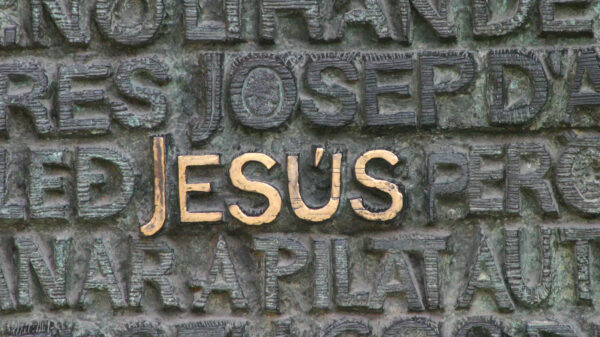Many of my articles here at ColdCaseChristianity.com investigate issues and passages commonly offered as examples of “contradictions” between Gospel accounts. One such alleged contradiction seems to exist in the description of the women who discovered the empty tomb of Jesus. How many women visited the tomb? One? Two? Three? It seems to depend on which Gospel you read. Are the Gospel authors confused about this issue or fabricating the story altogether? I don’t think so, but before we investigate the narratives, let’s review the description of the women in each account:
Matthew 28:1-10
Now after the Sabbath, as it began to dawn toward the first day of the week, Mary Magdalene and the other Mary came to look at the grave. And behold, a severe earthquake had occurred, for an angel of the Lord descended from heaven and came and rolled away the stone and sat upon it. And his appearance was like lightning, and his clothing as white as snow. The guards shook for fear of him and became like dead men. The angel said to the women, “Do not be afraid; for I know that you are looking for Jesus who has been crucified. He is not here, for He has risen, just as He said. Come, see the place where He was lying. Go quickly and tell His disciples that He has risen from the dead; and behold, He is going ahead of you into Galilee, there you will see Him; behold, I have told you.” And they left the tomb quickly with fear and great joy and ran to report it to His disciples. And behold, Jesus met them and greeted them. And they came up and took hold of His feet and worshiped Him. Then Jesus said to them, “Do not be afraid; go and take word to My brethren to leave for Galilee, and there they will see Me.”
Mark 16:1-10
When the Sabbath was over, Mary Magdalene, and Mary the mother of James, and Salome, bought spices, so that they might come and anoint Him. Very early on the first day of the week, they came to the tomb when the sun had risen. They were saying to one another, “Who will roll away the stone for us from the entrance of the tomb?” Looking up, they saw that the stone had been rolled away, although it was extremely large. Entering the tomb, they saw a young man sitting at the right, wearing a white robe; and they were amazed. And he said to them, “Do not be amazed; you are looking for Jesus the Nazarene, who has been crucified. He has risen; He is not here; behold, here is the place where they laid Him. But go, tell His disciples and Peter, ‘He is going ahead of you to Galilee; there you will see Him, just as He told you.’” They went out and fled from the tomb, for trembling and astonishment had gripped them; and they said nothing to anyone, for they were afraid. Now after He had risen early on the first day of the week, He first appeared to Mary Magdalene, from whom He had cast out seven demons. She went and reported to those who had been with Him, while they were mourning and weeping.
Luke 23:27
And following Him [on the way to the crucifixion] was a large crowd of the people, and of women who were mourning and lamenting Him. But Jesus turning to them said, “Daughters of Jerusalem, stop weeping for Me, but weep for yourselves and for your children.”
Luke 23:48-49
And all the crowds who came together for this spectacle, when they observed what had happened, began to return, beating their breasts. And all His acquaintances and the women who accompanied Him from Galilee were standing at a distance, seeing these things.
Luke 23:55-56
Now the women who had come with Him out of Galilee followed, and saw the tomb and how His body was laid. Then they returned and prepared spices and perfumes.
Luke 24:1-10
But on the first day of the week, at early dawn, they came to the tomb bringing the spices which they had prepared. And they found the stone rolled away from the tomb, but when they entered, they did not find the body of the Lord Jesus. While they were perplexed about this, behold, two men suddenly stood near them in dazzling clothing; and as the women were terrified and bowed their faces to the ground, the men said to them, “Why do you seek the living One among the dead? He is not here, but He has [a]risen. Remember how He spoke to you while He was still in Galilee, saying that the Son of Man must be delivered into the hands of sinful men, and be crucified, and the third day rise again.” And they remembered His words, and returned from the tomb and reported all these things to the eleven and to all the rest. Now they were Mary Magdalene and Joanna and Mary the mother of James; also the other women with them were telling these things to the apostles.
John 20:1-3
Now on the first day of the week Mary Magdalene came early to the tomb, while it was still dark, and saw the stone already taken away from the tomb. So she ran and came to Simon Peter and to the other disciple whom Jesus loved, and said to them, “They have taken away the Lord out of the tomb, and we do not know where they have laid Him.” So Peter and the other disciple went forth, and they were going to the tomb.
In a very brief reading of these passages, a contradiction seems to emerge. Matthew mentions two women by name. Mark mentions three by name. Luke mentions at least three by name but describes more. John only identifies Mary Magdalene. You can see why some skeptics point to these passages in an effort to discredit the narratives. How many women were actually involved at the tomb of Jesus, and why are there variations in these accounts? Before we examine the passages in a more detailed way, let me revisit some of the principles I use to evaluate reliable eyewitness testimony. As I described in prior posts (and in my first book, Cold-Case Christianity), even though I accept and affirm the inerrancy of Scripture, inerrancy is not required of reliable eyewitnesses. In fact, I’ve never had a completely inerrant eyewitness in all my years as a homicide detective. In addition, I’ve never had a case where two witnesses have ever agreed completely on the details of the crime. Eyewitness reliability isn’t dependent upon perfection, but is instead established on the basis of a four part template I’ve described repeatedly in my book and on my website. But beyond these generalities, much can be said specifically about the variations between descriptions of the women at Jesus’ tomb. Let me revisit some of the same principles we used to evaluate the varying accounts related to the sign over Jesus’ cross:
Identify the Common Details
When interviewing multiple eyewitnesses, I listen carefully for common features in their testimony. In every witness observation, some details are more important than others; some aspects of the event stick out in the mind of the observers more than others. In this case, every author is clear about one thing: women (plural) were the first to find the empty tomb. The women who attended to Jesus during his ministry loved Him enough to attend to his body after the crucifixion. According to Mark, they went to the tomb for a purpose: to anoint Jesus with spices. It’s not surprising the women disciples of Jesus would be thoughtful and caring enough to want to do this. Every gospel author agrees; the women came to the tomb and were the first to discover it empty. Many Christian Case Makers have noted the importance of this claim. After all, in a culture hesitant to accept the testimony of women in civil and criminal hearings, the authors of the Gospels offered women as the first witnesses of the empty tomb. If this is a late fictional account, one might wonder why the authors didn’t insert Nicodemus or Joseph of Arimathia in this role. They would certainly have made the account more credible to the first hearers. Instead, the authors describe women as the first eyewitnesses. This agreement makes the account all the more credible. Women weren’t described here to make the narrative more convincing (they actually hurt the account), but were instead described because they happen to be the true first witnesses.
Recognize the Perspective of Each Eyewitness
Every witness offers a view of the event from his or her unique perspective. I’m not just talking about geographic or locational perspectives here, but I am also talking about the personal worldview, history and experience every witness brings to the crime. All witness testimony is colored by the personal interests, biases, aspirations, concerns and idiosyncrasies of the eyewitnesses. In this particular case the most glaring exception in the description of the women is from John’s account. John mentions only Mary Magdalene by name. He does, however, tell us this Mary was not alone. When describing her visit to the tomb, Mary later tells Peter, “They have taken away the Lord out of the tomb, and we do not know where they have laid Him.” So even John’s account acknowledges the presence of additional women. The issue here is not that each author describes a different number of women, but that each author chooses to identify different women by name. Why is this the case? Once again, it all comes down to the purpose and individuality of each reporter, and as investigators, we may never know precisely why variations of this nature occurred. But John’s Gospel does seem to give us a clue. John appears to be focused on the first male eyewitnesses of the empty tomb. Unlike other authors, John spends much more time and gives much more detail about how he and Peter discovered the empty tomb. As a result, the women are in a secondary role in John’s narrative. Mary Magdalene is mentioned by name simply because she happened to be the woman who first contacted Peter about the tomb. Even though John acknowledges there were other women involved (as seen in Mary’s use of the plural pronoun, “we”), he doesn’t take the time to describe them. John seems to place higher value in his own eyewitness status than in the eyewitness status of the women. He later reinforces his own pedigree by saying “This [John] is the disciple who is testifying to these things and wrote these things, and we know that his testimony is true” (John 21:24).
Differentiate Between Complimentary and Conflicting Accounts
When comparing two eyewitness accounts, I am more concerned about unresolvable contradictions than complimentary details. In fact, I have come to expect some degree of resolvable variation in true, reliable eyewitness accounts. When examining the number of women present at the tomb of Jesus, the four accounts could all be seen as accurate representations of what really happened if the group of women included the following people: Mary Magdalene, Mary the mother of Jesus, Mary the Mother of James (and Joseph), Salome, and Joanna. This group would account for the women mentioned by all four authors. All the authors speak of a group and some authors identify specific members of this group based on their personal perspective, purposes and audience.
Assess the Opportunity for Collusion
Whenever I am called to a crime scene as a detective, the first request I make of the dispatcher is to separate the eyewitnesses before I get there. I request this so the witnesses won’t have the opportunity to talk to one another about what they’ve seen. Witnesses will sometimes try to resolve any variations before I get there. I don’t want them to do this; that’s my job, not theirs. Instead, I want the messy, sometimes confusing, apparently contradictory accounts offered by every group of witnesses in such a situation. There have been times, however, when witnesses have the opportunity to consult with one another for several hours before I arrive on scene. When this is the case, and their individual accounts still vary from one another, I usually have even more confidence in the reliability of these accounts. When people have the opportunity to align their statements, yet still refuse to do so, I know I am getting the nuanced observations I need to properly investigate the case. The Gospel authors (and the early Church) certainly had the opportunity to change the descriptions of the women to make sure they matched, but they refused to do so. As a result, we can have even more confidence in the reliability of these accounts. They display the level of variation I would expect to see if they were true, reliable eyewitness descriptions.
In my experience as a cold case detective, no two eyewitness accounts ever agree on every detail or every emphasis. This doesn’t shake me as an investigator and it’s never inhibited an investigation. It’s just the nature of eyewitness testimony. Related to the number and identity of the women at the tomb of Jesus, the four gospel accounts demonstrate the same variation I’ve seen in my professional work. How many women were at the tomb? Five, most likely. The Gospels are not contradictory in their description of these five women for the reasons I’ve cited. You can trust the reliability of the New Testament eyewitness Gospels.

J. Warner Wallace is a Dateline featured cold-case homicide detective, popular national speaker and best-selling author. He continues to consult on cold-case investigations while serving as a Senior Fellow at the Colson Center for Christian Worldview. He is also an Adj. Professor of Christian Apologetics at Talbot School of Theology, Biola University, and a faculty member at Summit Ministries. He holds a BA in Design (from CSULB), an MA in Architecture (from UCLA), and an MA in Theological Studies (from Gateway Seminary).
































